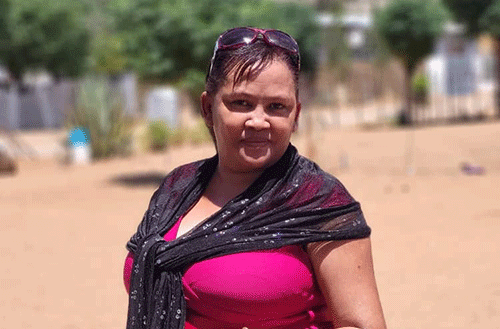Patricia de Klerk (40) suffers from burnt-out Takayasu’s arteritis, a systemic inflammatory condition characterised by damage to the large and medium arteries and their branches.
As a result of this, she has been let go from her job at a local clinic due to her deteriorating health which was accompanied by frequent visitations to healthcare institutions.
“All started in 1998 when I was in grade 9 when I got symptoms of chest and neck pain, dizziness, changes in vision that led to me visiting a local clinic,” recalls De Klerk.
A week and a half ago, she went for a follow-up and through that, the doctors noticed an inflammation in her vein meaning that the Takayasu is active.
“The type of medication I was on gave me a lot of infections, so I was put on new medication. I had flu, and they decided to hospitalise me because of the inflammation activities and side-effects. I am now on new medication as I was removed from the others, that’s what happened in the last week and a half,” said the soft-spoken De Klerk.
De Klerk is now in Walvis Bay as the weather there is favourable compared to Rehoboth, which is sometimes dusty and unbearable.
“The shortness of breath, if I take a shower and I start wearing clothes, I get that. I cannot walk for long because the arteritis starts. I had an x-ray the other day because of low back pain. I was told the arteritis has started eating away some of the cushions in the spine but at the lower back, meaning bones are pressing on each other. That’s where the pain is coming from, so I can’t stand or walk for long,” she stated.
De Klerk noted that the doctors and healthcare professionals do what they can with what they have, but more resources are needed to cater to such rare diseases.
“I am still learning about this disease; I don’t know much about it. I learn from doctors here and there when doing follow-ups, and at least they do try to simplify it for me so that I can fully grasp my condition. The only way I have coped with this is because I have made peace with it. It’s not easy, but I don’t have a choice. I learn as I live with it,” she indicated.
The US Autoimmune Association states that Takayasu’s arteritis is occasionally called “pulseless disease”, because of the difficulty in detecting peripheral pulses that sometimes occur because of the vascular narrowings.
The “typical” patient with Takayasu’s arteritis is a woman under the age of 40.
“Because Takayasu’s arteritis can cause heart problems, high blood pressure and stroke, patients with Takayasu should talk to their doctor about ways to lower the risk of these serious problems,” the association says on its website.


